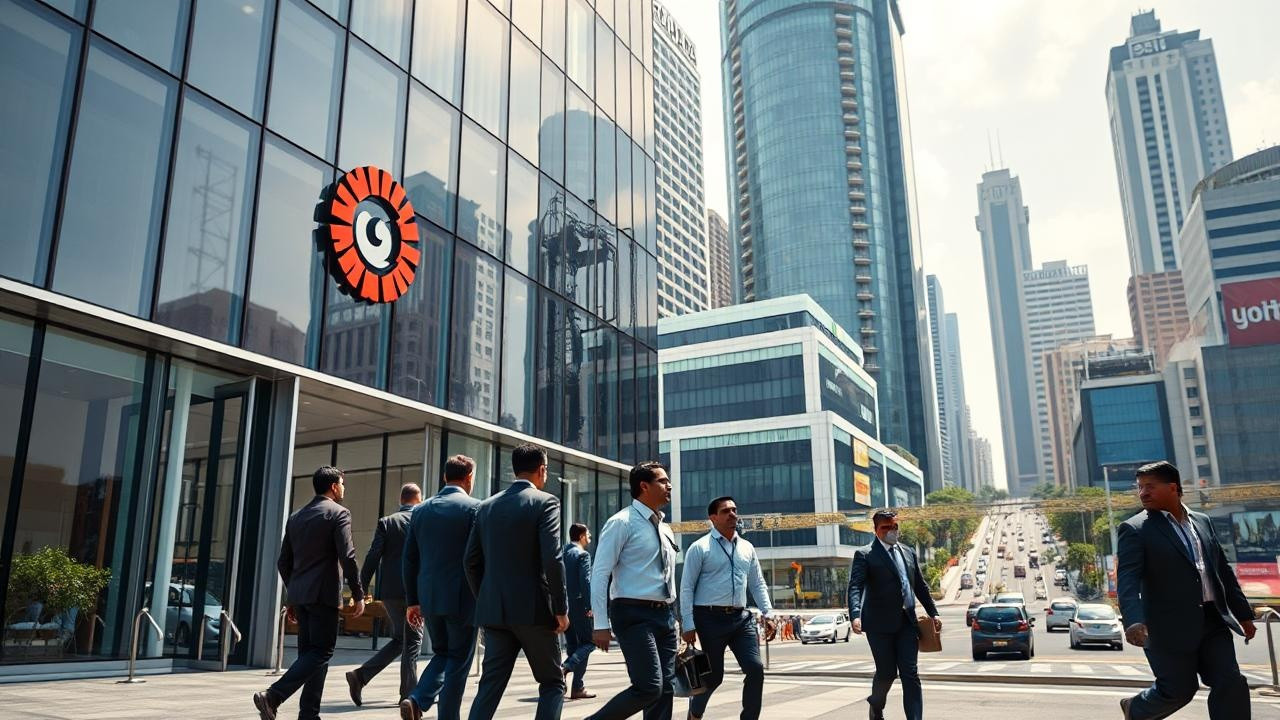US companies are the biggest drivers of India’s office space demand, leasing over 64 million sq ft between 2022 and 2024. Approximately 70% of this space is for Global Capability Centres (GCCs), particularly in Bengaluru. Technology and BFSI firms are leading this trend, drawn by India’s skilled talent and favorable business environment.
India’s Quiet Real Estate Revolution: Are American Giants Redefining the Office Landscape?
Okay, let’s talk shop. Not the cutesy coffee shop kind, but the serious, skyscraper-dominating, glass-and-steel kind of shop. Because something interesting is brewing in India, and it’s got a distinctly American flavor. We’re talking about office spaces, and the sheer volume of it being snapped up by US companies operating here.
The headlines are buzzing about a “GCC boom,” but honestly, that jargon can feel a bit… sterile. Let’s cut to the chase: American firms are leasing office space in India like it’s going out of style. A whopping 64.5 million square feet, to be precise. That’s not just a building or two; that’s a veritable city dedicated to housing their operations. And it begs the question: why the mad rush?
“GCC” is short for Global Capability Centers. These are essentially extensions of multinational companies, often handling crucial functions like IT, finance, research, and customer support. Think of them as a strategic play to leverage India’s talent pool and cost efficiencies. They’re not exactly new, but their growth is now hitting fever pitch.
So, what’s driving this insatiable appetite for office space? It’s a confluence of factors, really. India’s got a vast and skilled workforce, particularly in the tech sector. You’ve got bright graduates pouring out of universities every year, eager to make their mark. And, let’s be honest, the cost of hiring them is significantly lower than in the US. This makes India a seriously attractive location for companies looking to streamline operations and boost their bottom line.
But it’s not just about cost. It’s also about access to a thriving ecosystem of innovation. India is becoming a hub for cutting-edge technology, and US firms want a piece of the action. Being physically present allows them to tap into this talent pool, collaborate with local startups, and stay ahead of the curve. It’s a strategic move to ensure they don’t miss the next big thing.
Now, let’s talk about where this office space party is happening. Bangalore, predictably, is leading the charge. The city already has a well-established reputation as India’s Silicon Valley, with a vibrant tech scene and a massive talent pool. Makes perfect sense. But other major cities like Mumbai, Delhi-NCR, Chennai, Hyderabad, Pune, and Kolkata are also seeing significant activity. This indicates that the GCC boom isn’t just a Bangalore phenomenon; it’s a nationwide trend reshaping the commercial real estate landscape.
The article highlights Bengaluru as the frontrunner, but what’s truly fascinating is the ripple effect on these other cities. It paints a picture of a diversified economic upswing, with different regions attracting different kinds of GCC investments. Chennai, for instance, has a strong manufacturing base that appeals to certain companies. Mumbai, with its financial hub status, attracts a different breed of GCC focused on banking and financial services.
What does this mean for India? Well, for starters, it’s a huge boost to the economy. We’re talking about billions of dollars in investment, job creation, and increased demand for commercial real estate. It’s also a validation of India’s potential as a global hub for technology and innovation. It strengthens our position on the world stage and attracts even more foreign investment.
However, let’s not get carried away. This rapid expansion also presents its own set of challenges. Infrastructure needs to keep pace. We need to ensure that our cities can handle the increased traffic, housing demand, and strain on resources. Sustainable development and responsible urban planning are crucial to avoid the pitfalls of unchecked growth.
There’s also the potential for a widening income gap. While the GCC boom creates high-paying jobs for some, it’s important to ensure that the benefits are shared more widely across society. We need to invest in education and skills training to equip more people with the tools they need to participate in this new economy.
Ultimately, the American firms leasing millions of square feet in India represents a significant shift in the global business landscape. It’s a vote of confidence in India’s potential, but it also places a responsibility on us to manage this growth sustainably and equitably. It’s not just about filling office spaces; it’s about building a future where everyone benefits from this exciting new chapter. The stakes are high, and the opportunity is immense.
📬 Stay informed — follow us for more insightful updates!







